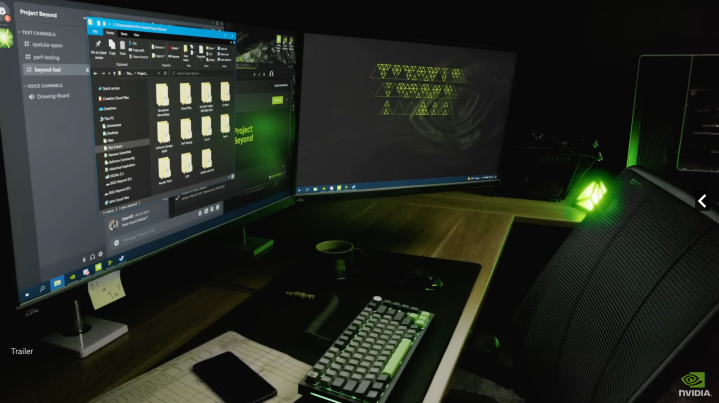
Oh, ultrawide monitors, how I have coveted thee.
Whether it’s the ultrabright mini-LED models, or the ultra-gorgeous OLEDs, there is a lot to love about the latest crop of ultrawide monitors. They’re very much the vogue display type if you’re buying a premium monitor, especially for gaming. But as much as these new displays are beautiful, and objectively far more impressive than the monitors I use day-to-day, I still prefer dual monitors.
They might have bezels between them (in my case they might even be mismatched), and one of them is ancient, but they do exactly what I need of them. More than that, I’d argue if you pit any combination of multimonitor setups against ultrawides, they still have some advantages, which has made me hesitant to embrace the trend of ultrawide monitors.
Dual monitors are so much more modular
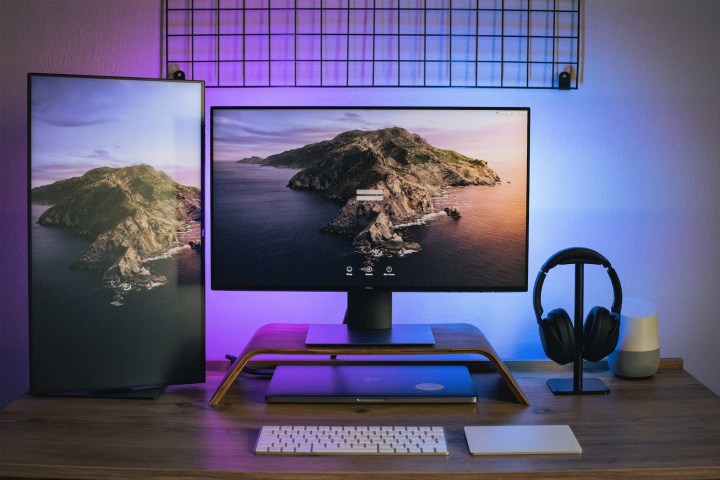
One of the greatest strengths of multimonitor setups is that they are inherently modular. They are two distinctly separate displays, so you can do what you will with each of them. Where an ultrawide might provide the same physical screen space, multiple monitors can do more or less, or any combination in-between. You can add more than two displays for even more screen space. You can mount the displays vertically, for greater vertical headroom or a unique display perspective.
But arguably the most important part? You can buy them separately. That means that it only costs a few hundred bucks to add another great display to your existing setup, massively expanding your screen space for working, and giving you new options for gaming. You can even add an ultrawide to an existing monitor setup to have both an ultrawide and a secondary display for chat, YouTube, emails, or anything else you can think of.
That’s a great amount of freedom, allowing you to splurge more on your primary screen and pick up something cheaper for the secondary display. Heck, you might even want to buy something uniquely purposed for being a secondary screen like the LG DualUp monitor.
Multimonitor setups can cause their fair share of headaches, but to me, they offer the best of both worlds.
And yes, ultrawide monitors can do many of the things that two monitors can. But not everything. For example, while you can plug two systems into an ultrawide and run them side by side, that’s not quite as easy as just plugging the other system into a secondary display. You can also turn off that second display if you don’t need it, cutting down on light pollution if you want a darker room, and saving you money on energy.
Windows snapping is better on dual monitors, too. You can quickly snap new windows to the second display, but on an ultrawide, it’s more complicated to configure those zones for that multimonitor productivity feel.
Ultrawides aren’t as detailed
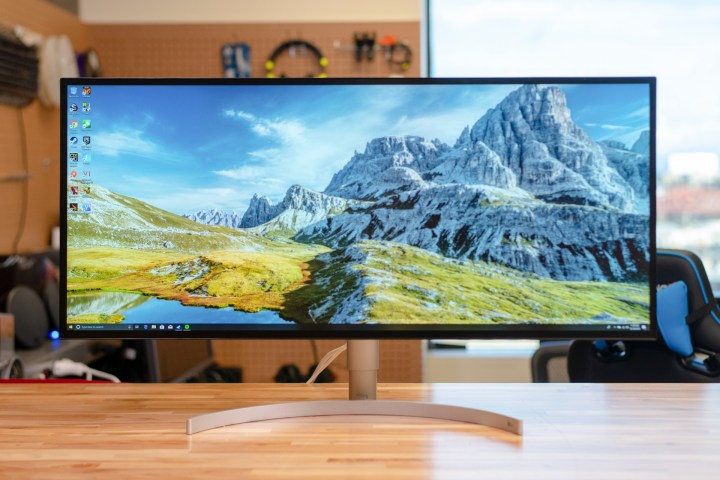
The latest and greatest ultrawides look incredible, and many people are adopting the highest-end panels, such as the Alienware 34 QD-OLED. But even the most pixel dense of them cannot compete with multiple high-resolution monitors. Even some of the best 5K ultrawides, with monstrous resolutions like 5,120 x 2,160, aren’t enough. A pair of generic 4K monitors, at 3,840 x 2,160 each, vastly out-pixel that ultrawide. Since those displays will individually be smaller, too, you’ll have greater pixel density, resulting in greater detail.
You’d have to make use of both displays at the same time to leverage all of that detail, but until 8K monitors become more viable, ultrawides just aren’t going to offer the same kind of raw pixel counts that you get with dual monitor setups.
Then, there’s the problem of support. As great as ultrawides are great for watching movies without the black bars, they’re even better for gaming. That is — if the game supports it.
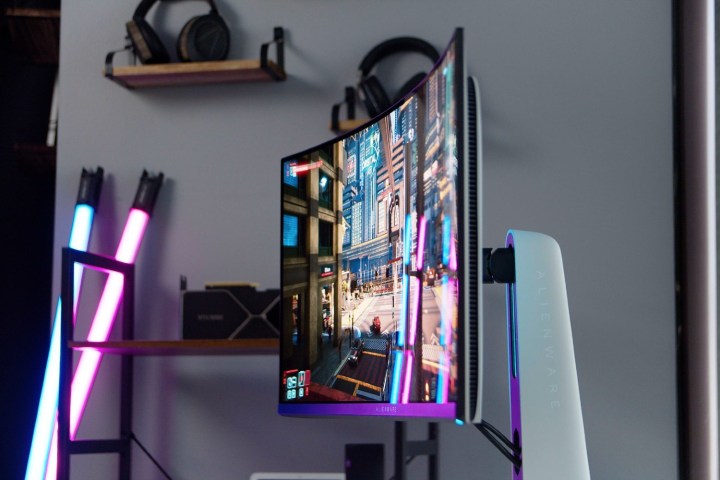
Most modern AAA games do have some measure of support for ultrawides, but if they don’t, you’re stuck dealing with third-party mods to add it in, or black bars down the side of your game. That not only wastes valuable pixels, reducing the overall resolution of the game you’re playing, but it just doesn’t look great. It can break immersion if you’re the kind of person to get hung up on such things. That problem is just as pronounced with some that are designed with 16:9 in mind, and won’t default to a comfortable size on an ultrawide.
This problem is exacerbated even more with the very widest of ultrawide monitors. The Samsung G9 Neo is one of the best monitors we’ve ever used. For anything. But the number of games that support a 32:9 aspect ratio is even smaller. Games consoles don’t support ultrawides of any size, either.
You can’t even blame the developers. Steam’s hardware survey paints a clear picture: most gamers don’t use ultrawides. And even though the majority of new AAA games support ultrawide aspect ratios, it’s certainly not universal just yet.
Dual monitors are cheaper
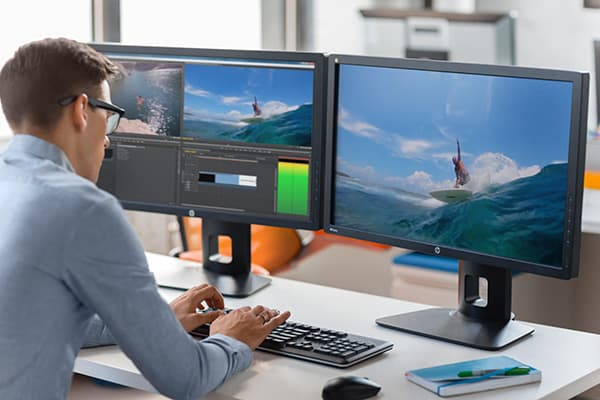
Not only can you buy dual monitors separately at different times, helping to bring down the price, but they’re just vastly cheaper in general. Some of the best 4K gaming monitors of a traditional size and shape cost only a few hundred dollars each — and you could buy two of the budget options for around $600. Most gaming ultrawides are more expensive per screen — and considerably more so at the top-end.
And ultimately, that’s the primary thing that holds me back from going all-in on an ultrawide. The cost just doesn’t justify the upgrade. It may at some point, though. Eventually, my second monitor is going to fail and I’m going to be faced with replacing it for a couple of hundred bucks, or replacing both it and my main 27-inch gaming display with an ultrawide that can do both their jobs at once.
Even then I might be tempted to just get another 27-inch monitor for cheap and continue on with my dual-monitor setup. But it will be a tricky choice to make, because the latest ultrawides, especially some of the new OLED models, really are stunning. They’re better than the monitors I have, but the modularity and versatility of even my aging displays is really hard to beat.
Editors' Recommendations
- This stacked, vertical monitor setup revolutionized my workflow
- Get ready: the first 8K ultrawide monitors are coming out in 2023
- This portable monitor may be the weirdest display yet
- Here’s why crusty, old CRT monitors are still better than modern gaming displays




